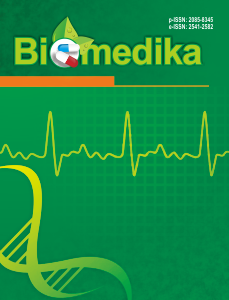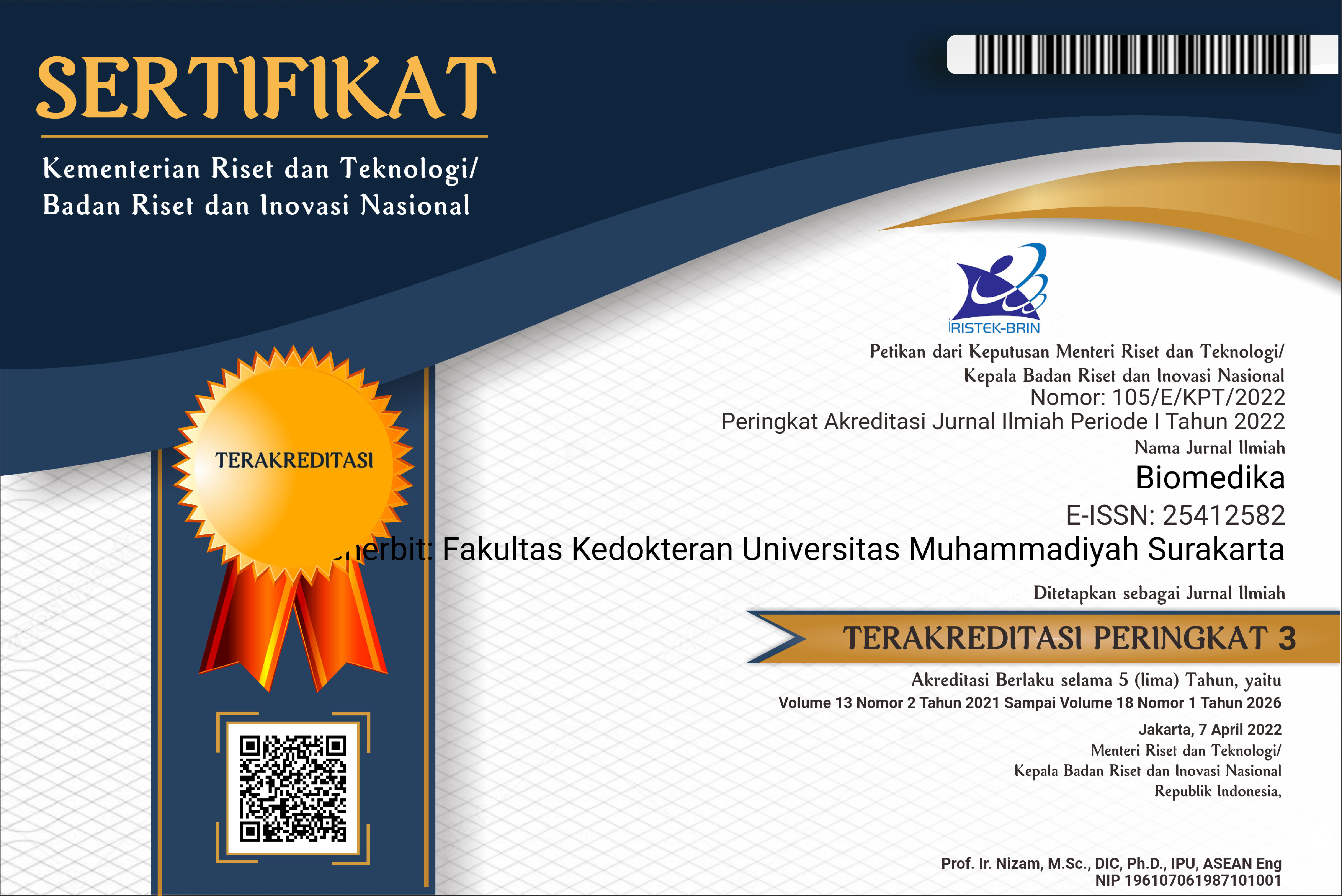Potential of Natural Larvicide Microemulsion Based on Pomegranate Peel Extract (Punica granatum L) against Dengue Haemorrhagic Fever Vectors
DOI:
https://doi.org/10.23917/biomedika.v17i1.6696Keywords:
Aedes aegypti, Dengue, Larvicide, Microemulsion, Punica granatumAbstract
Background: Dengue fever, caused by the dengue virus which is transmitted by the Aedes aegypti mosquito, is a significant global health problem. Controlling the Aedes aegypti vector is key in efforts to reduce the spread of this disease. However, the use of chemical larvicides in vector control has raised concerns regarding environmental impacts and mosquito resistance. Therefore, research related to the development of natural larvicides based on pomegranate peel extract contain flavonoids, terpenoids, tannins, steroids, and saponins, in microemulsion form has an urgency to provide a safer and more sustainable alternative. Objective: To determine the larvicidal activity of microemulsion ethanol extract of pomegranate peel (Punica granatum) against Aedes Aegypti larvae. Methods: This research uses an experimental study design, post-test only controlled group design. The samples used were Aedes aegypti larvae instar III-IV. There were 12 treatment groups consisting of positive control, negative control, and treatment groups with microemulsion ethanol extract and ethyl acetate fraction of pomegranate peel extract, each with five different concentrations. Results: The probit analysis results indicate that the LC50 (Lethal Concentration for 50% mortality) for the ethanol extract microemulsion of pomegranate peel is 51,607 ppm, while the LC50 for the ethyl acetate fraction microemulsion of pomegranate peel is 52,401 ppm against Aedes aegypti larvae. Conclusion: the probit analysis shows that the ethanol extract microemulsion of pomegranate peel is slightly more effective in killing Aedes aegypti larvae compared to the ethyl acetate fraction microemulsion. These results emphasize the potential of pomegranate peel extracts as natural larvicides, contributing to sustainable and environmentally friendly mosquito control measures.
Downloads
Downloads
Submitted
Accepted
Published
Issue
Section
License
Copyright (c) 2025 Biomedika

This work is licensed under a Creative Commons Attribution 4.0 International License.












